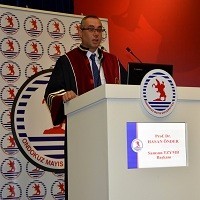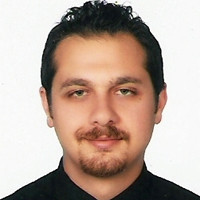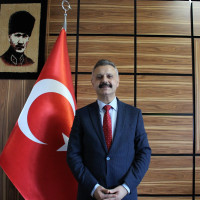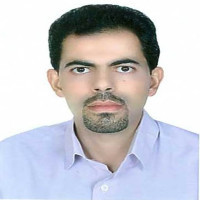Research Article
Aim & Scope
Black Sea Journal of Engineering and Science (BSJ Eng Sci) is a double-blind peer-reviewed journal published electronically 4 times in January, April, July, and October mounts in a year since January 2018. BSJ Eng Sci is an open-access international e-journal. The overall aim of BSJ Eng Sci is to promote the professional development of its readers, researchers, and scientists related to engineering and science around the world. BSJ Eng Sci publishes, in Turkish or English, full-length original research articles, innovative papers, conference papers, reviews, mini-reviews, rapid communications, or technical notes by the scientists on various aspects of engineering and science like Computer, Information Systems, Environment, Electrical and Electronics, Industry, Industrial Design, Energy Systems, Physics, Genetics, Food, Geodesy and Photogrammetry, Aerospace, Manufacturing, Construction, Geology, Mining, Machinery, Mechatronics, Metallurgy and Materials, Nanotechnology, Nuclear Energy, Automation, Automotive, Oil and Natural Gas, Textile, Aircraft engineering and Biology, Physics, Statistics, Chemistry, Mathematics, etc. The objective of BSJ Eng Sci is to provide a platform to the scientific community to publish their research findings and also to open new perspectives for further research. BSJ Eng Sci is published electronically only and the online version is available for free.
Author Guidelines
Instructions to Authors
Black Sea Journal of Engineering and Science (BSJ Eng Sci) is published 4 times a year as an international double-blind peer-reviewed journal. BSJ Eng Sci is an open access international e-journal. BSJ Eng Sci publishes, in Turkish or English, full-length original research articles, innovative papers, conference papers, reviews, mini-reviews, short communications, or technical notes on various aspects of engineering and science like Computer, Information Systems, Environment, Electrical and Electronics, Industry, Industrial Design, Energy Systems, Physics, Genetics, Food, Geodesy and Photogrammetry, Aerospace, Manufacturing, Construction, Geology, Mining, Machinery, Mechatronics, Metallurgy and Materials, Nanotechnology, Nuclear Energy, Automation, Automotive, Oil and Natural Gas, Textile, Aircraft engineering and Biology, Physics, Statistics, Chemistry, Mathematics, etc.
All scientific contributions are assessed initially by the Editor-in-Chief. Those manuscripts failing to reach the required priority rating, failing to comply with the Instructions to Authors, or not fitting within the scope of the journal are not considered further and are returned to authors without detailed comments. It should be noted that rebuttals that challenge rejections based on priority and/or scope alone will rarely be successful since such a decision is necessarily a matter of opinion.
Manuscripts meeting the requirements will be peer-reviewed on the criteria of originality and quality. Authors may suggest up to three potential referees as optional. Please provide their email addresses, institution, and academic title. If the decision following review is "reject subject to major revision", a revised version may be submitted, but if major issues with the revised version are still identified by the reviewers, it will then be rejected outright. On acceptance, papers may be subjected to editorial changes. Responsibility for the factual accuracy of a paper rests entirely with the author.
All instances of publishing misconduct, including, but not limited to, plagiarism, data fabrication, image/data manipulation to falsify/enhance results, manipulation of the reviewing process, etc., will result in rejection/retraction of the manuscript.
All responsibility for the scientific content of the articles to be published in the journal belongs to the author(s). "Copyright Form" and "Conflict of Interest Statement" forms must be signed by all authors and uploaded to the journal's online application system as a separate supplementary file by the responsible author. All authors must be registered in the DergiPark system, and during the upload of the article to the system, the names, the institution's addresses, e-mail, and DOI numbers of all authors must be entered in the metadata section. If any of the authors are not registered in the DergiPark system, the article is on hold and the Editor is not appointed. In addition, the abstract and references of the article should be entered in the metadata section. If any of the mentioned information is missing, the article will be returned to the corresponding author to complete the information.
Ethical committee approval should be obtained for the studies on clinical or experimental in humans or animals and ethics committee reports should be attached when submitting the manuscript. Additionally, this approval should be stated in the article. After the acceptance of the manuscript, the authors, and the order of the authors cannot be changed.
After the referee evaluation, the articles that need revision are sent to the author/s electronically through the DergiPark system. The author/s should take into account the comments of the referee/s and explain the comments and criticisms one by one. They must also prepare a detailed explanation in case they disagree with the reviewers' criticism. The revisions of the articles that have passed the referee evaluations should be uploaded to the system with the correction list within 30 days at the latest, and the article revision process must be completed. The specified period may be extended by the author's request for additional time or by the decision of the Editor-in-Chief. Otherwise, the existing article is considered a newly submitted article. Before making the final decision, the Editor-in-Chief reviews the revisions and corrections made by the author/s and makes the final decision on whether to publish the article.
Statement of Ethics in Research and Publication
The publication of peer-reviewed articles in agreement with the rules of Publication Ethics and Publication Malpractice Statement (https://dergipark.org.tr/en/pub/bsengineering/policy) is an essential model for Black Sea Journal of Engineering and Science (BSJ Eng Sci). It is necessary to agree upon standards of expected ethical behavior for all parties involved in the act of publishing: the author, the journal editor, the peer reviewer and the publisher.
Our ethic statements are based on the Committee on Publication Ethics (COPE) and Council of Science Editors (CSE) Editorial policy statements.
BSJ Eng Sci endorses the Higher Education Scientific Research and Publication Ethics Guidelines rules and will pursue cases of suspected research and publication misconduct. Additionally, This journal is following of COPE and complies with the highest ethical standards in accordance with ethical laws.
Preparation of Manuscript (APA 6.0 Style)
As the basic spelling rules works sent must be written in accordance with the APA (6.0) style.
General Format
The authors should consider the following sections to provide guidelines on how to prepare and compose your manuscript. Please read these standards to ensure a smooth peer-review and production process.
The manuscript must be double-spaced in Times New Roman font 12-point size. Leave a line space between paragraphs and sections. All pages should be numbered consecutively in the bottom center, beginning with the title page.
The lines on all pages, including those pages for references, figures, and tables must be numbered consecutively in the left margin, beginning with number one at the top of the title page. A 2.5 cm margin on both sides of the page is desirable.
Special words do not underline, use italics instead. Weights and measures must be expressed in the SI unit (metric) system and temperatures in the Celsius (centigrade) scale.
Tables are double-spaced and should be as few and as simple as is feasible. Each table should be on a separate sheet.
Figures and photographs should be carefully prepared so that a clear image can be printed.
Authors must declare any financial support or relationships that may pose a conflict of interest.
Manuscript preparation is similar for original research articles, reviews, short communication, or technical notes.
Sectioning and Structure
The manuscript should be organized in the following sequence: title page, abstract, keywords, introduction, materials and methods, results, discussion, ethics committee approval (for the human survey and animal experimental or clinical studies), conflict of interest, acknowledgments (optional), references, tables, and figures.
1) Title page
The title page should be included in the following items;
The type of the manuscript should be specified on the title page; such as research article, review, short communication, or technical notes.
The title of the manuscript should be typed in bold-faced print using both upper and lower-case letters and set in the center of the page. The title length of the manuscript must be limited to 250 characters including spaces. Abbreviations are not permitted in the title.
Full names of all authors should be provided with the family name and indications of professorial rank or other professional titles should not be used.
The address of the institution that was conducted should include the name of the institution, city, zip code, and country. DOI number and e-mail information of all authors must be given on the cover page. The authors should be marked with "1" "2" "3", which should appear in superscript at the top right-hand corner of the author's name and at the beginning of each institution.
The name, e-mail, and telephone number of the corresponding author. The corresponding author should be marked with "*"
2) Abstract and Keywords
The abstract is required for all articles types (original research articles, reviews, short communication, case reports, etc.). The abstract should be one paragraph without sections and should not exceed 350 words for the Turkish abstract and 450 words for the English abstract (minimum 100 words for both languages), following the title page. The abstract should be free of references and abbreviations. The abstract should summarize pertinent results in a brief but understandable form.
At the end of the abstract, at least three and up to six keywords that best describe the content of the research should be listed. The term "Keywords" should appear in bold followed by a colon. The first letter of each keyword is capitalized, separated by a comma, and should be ordered in order of importance.
3) Introduction
The introduction should put forth the related background to the study, explain why the study was done, and specify the hypotheses to be tested. Extensive discussion of relevant literature should be included in the discussion of results, not in the introduction.
4) Materials and Methods
The materials and methods should present essential details, experimental design, and statistical analysis. A clear description or original reference is required for all biological, analytical, and statistical procedures used in the study. All modifications of procedures must be explained. Treatments and measurements should be described clearly. Statistical models and methods to analyze should be described clearly and fully.
5) Results
The results should present the findings of the study. The results of the study should be presented in table and data means (numbers) should not be repeated broadly in the text. The results should be separate from the discussion and written in the past tense. Results and Discussion can be combined if the editor accepted.
6) Discussion
The discussion should assess the results clearly and concisely in terms of biological mechanisms. Previous findings in the discussion should not be repeated, the author's results in the broader context of other studies on the subject interpreting them with a minimum of speculation. The discussion should integrate with the research findings of other studies to provide the readers with a broad base for understanding whether the hypotheses tested were accepted or rejected.
7) Conflict of interest
The corresponding author must inform the editor of any potential conflicts of interest that could influence the author's interpretation of the data.
8) Acknowledgments (optional)
The acknowledgments should be as brief as possible
9) References
References should be organized according to the APA system. Examples and exceptions are listed below;
In the text, references should be cited in brackets and sorted by chronologically.
Samples;
Onder et al. (2015)
Sen and Kuran (2017)
Sen (2014)
(Wu et al., 2006; Kenyon and Blair, 2014; Sen, 2015)
In the references section, the references should be sorted alphabetically. All sources must be referred in a consistent manner. Journals titles should be abbreviated according to the conventional ISO abbreviations used by PubMed (http://www.ncbi.nlm.nih.gov/nlmcatalog/journals). The sample references are given below.
Journal Articles
Surname N, Surname N. Year. The full title of the article. Abbreviated Journal Name, Volume and Issue: first and last page.
Sen U, Sirin E, Aksoy Y, Ensoy U, Ulutas Z, Kuran M. 2016. The effect of maternal nutrition level during mid-gestation on post-natal muscle fiber composition and meat quality in lambs. Anim Prod Sci, 56: 834-843.Books and Book Chapters
Surname N, Surname N. Year. Title of the book or proceeding. Publisher, City, Volume, first and last page.
Field TG, Taylor RE. 2015. Scientific farm animal production: an introduction to animal science. Upper Saddle River, NJ: Pearson Prentice Hall, New York, USA, 11th ed., pp 425.
Surname N, Surname N. Year. Title of the contribution. In: Surname N, editors. Title of the book or proceeding. Publisher, City, Volume, first and last page.
Preston ND, Daszak P, Colwell RR. 2013. The human environment interface: applying ecosystem concepts to health. In: Mackenzie JS, Jeggo M, Daszak P, Richt JA, editors. One health: the human-animal-environment interfaces in emerging infectious diseases. Springer-Verlag, New York, USA, 8th ed., pp. 83-100.
Conference Papers
Surname N, Surname N. Year. The full title of the conference paper. In: Title of proceeding book, Date, City, Country, Pages.
Moss KJ, Greening L. 2009. The effect of age and gender on the time taken for horses to learn an operant task. In: Proceedings of the British Society of Animal Science, April 01-30, Southport, UK, p. 1.
Thesis
Surname N. Year. Title of the thesis. MSc or PhD thesis, University, Faculty or Institute, City, Pages.
Sen U. 2014. Maturation temperature and the use of antioxidants in in vitro embryo production in cattle. PhD thesis, Ondokuz Mayis University, Institute of Science, Samsun, pp. 182.
Internet Addressed Articles or Reports
Surname N. Year. The full title of the internet addressed article. URL: http://www.xxxxxxxxxxx (accessed date: month, day, year).
Smith J. 2001. Emergence of infectious diseases. URL: http://www.edpsciences.org/docinfos/INRARND (accessed date: September 24, 2002).
Anonymous. 2012. US Department of agriculture nutrient database for standard reference, Release 14. URL: http://www.nal.usda.gov/fnic/foodcomp (accessed date: March 23, 2012).
10) Table
Any abbreviation used in a table must be defined in that table. Tables should be double-spaced with each table on a separate sheet. The font size can be changed according to the size of the Table/s. All tables should be cited in the text. The title of the table continues on the same line with only the first letter capitalized. For numerals less than 1, a zero should be inserted to the left of the decimal point, and if possible, columns should be center-aligned. If there are no data for a particular entry, a hyphen should be inserted. If an explanation is necessary, an abbreviation can be used in the body of the table (e.g., ND) and it should be explained clearly in the footnotes. References to footnotes in a table are to be specified by superscript numbers, independently for each table. Superscript letters are used to designate statistical significance. Use a lower-case p to indicate probability values (i.e., p < 0.05). Presentation of pooled standard errors, the general basis for statistical comparisons of means, is recommended when the variance is homogeneous. These should be presented in a separate column or row. Standard errors can be attached to each mean by ± signs when variance or SE is heterogeneous (e.g., unbalanced experiments or unequal numbers of observations in treatment means).
11) Figure
Figures should be placed at the end of the manuscript with each figure on a separate page. Figures should fit in one column (8 cm wide), or full-page width (17 cm wide). Unnecessary backgrounds and grid lines should be removed from graphs. Each axis should have a description and a unit. For bar charts, different fill patterns may be used if needed (black, white, gray, and stripes). The preferred file type for figures is JPEG, TIFF, or PPT. The minimum resolution is 300 dpi for color and grayscale figures, and 600 dpi for line art. A caption should be prepared to provide sufficient information and all abbreviations, and the symbols used in the figure should be defined in the caption. The figure caption should be prepared at bottom of the figure.
12) Equations
The Equations should be numbered and the formula number should be shown in parentheses on the right side of the formula. The main characters and variables should be given in italics while numbers and mathematical expressions should be given with normal characters. The formulas should be given as 12 points. The equations should be cited in the text and given as "equation 1"
12) Manuscript file format
We request to submit the article in Microsoft Word format (.DOC). If you are using another word processor please save the final version of the manuscript (using the 'Save As' option of the File menu) as a Word document. In this case please double-check that the saved file can be opened in Microsoft Word. We cannot accept PDF or any other text files.
Ethical Principles and Publication Policy
Price Policy
All articles published in the Black Sea Journal of Engineering and Science (e-ISSN 2619-8991) are published in the full open-access model. All editors, authors, and readers registered in the DergiPark system subscribe to all issues and articles free of charge. Therefore, an article processing charge (APC) is requested from each manuscript sent to evaluation, regardless of the number of pages, to cover the expenses needed during the editorial process, referee evaluation process, acceptance for publication, publication, and post-publication processes.
For detailed information, please see "The Article Processing Charge (APC) Policy" page (https://dergipark.org.tr/en/pub/bsengineering/page/11332).
Article Processing Charge for Developed Countries: 80.00 - 100.00 USD
Article Processing Charge for Developing Countries: 60.00 - 50.00 USD
Article Processing Charge for Least Developed Countries: Free of Charge
Indexes
Citation Indexes
Other Indexes
Journal Boards
Editor in Chief


Biology Section Editor

Erkan Yalçın currently works at the Department of Biology, Ondokuz Mayıs University. Erkan does research in Plant Biodiversity, Ecophysiology and Vegetation Ecology
Physics Section Editor
Statistic Section Editor

Chemistry Section Editor


Mathematics Section Editor
Computer Engineering Section Editor

Electrical-Electronics Engineering Section Editor

Food Engineering Section Editors

Geomatics Engineering Section Editor

Civil Engineering Section Editor

Metallurgical and Materials Engineering Section Editor

Aerospace Engineering Section Editor

Geological Engineering Section Editor

Mining Engineering Section Editor

Slope Stability, Rock Mechanics and Mine Design
Forest Engineering Section Editor

Fisheries Engineering Section Editor
English Language Editor

Turkish Language Editor

Agriculture Engineering Section Editors

Textile Engineering Section Editor

Mohammad Khajeh Mehrizi earned his B.S. from Yazd University in 2003 and both his M.S. (2006) and Ph.D. (2011) in textile chemistry engineering from Isfahan University of Technology (IUT), Iran. He was a visiting student at the Technical University of Liberec (TUL) in the Czech Republic for six months in 2010, a visiting professor at EGE University in Turkey for one month in 2023, and at Istanbul Technical University for one month in 2024. Currently, he is an associate professor at Yazd University, where he has supervised over 50 undergraduate and 20 graduate students. He has published around 50 journal papers and more than 60 conference papers. His primary research interests include surface modification of textiles (such as plasma and UV treatment), printing and dyeing with natural dyes, biotechnology, decoloration of textile effluents, and medical and smart textiles.











